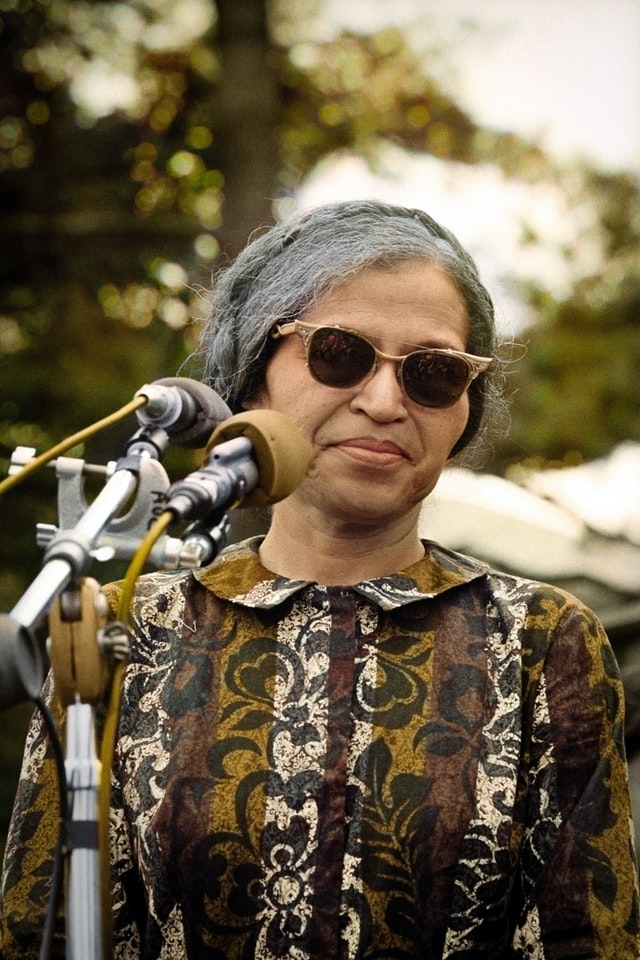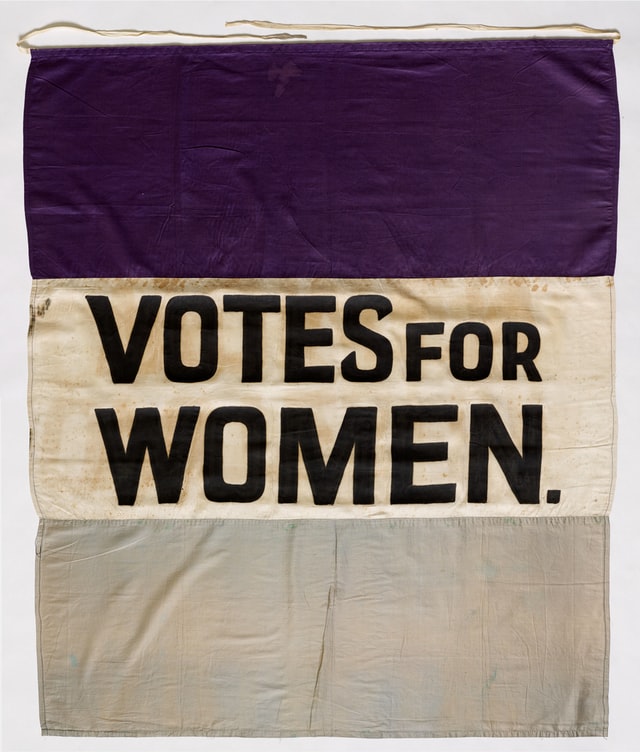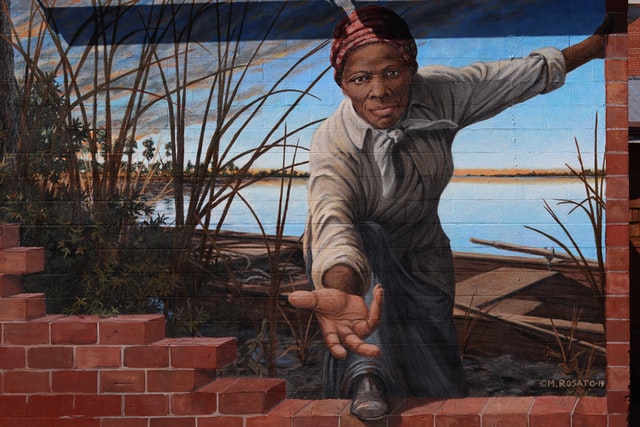As a celebration of women’s contributions to American history and modern society, the month of March has been designated as Women’s History Month. From scientists to aviators to civil rights activists, women have paved the way for future generations in all fields and positions.
Origins and Beginnings
Women’s History Month began as a weeklong celebration of women’s impacts on American history, culture, and society. It was first organized by the Sonoma school district in California in 1978 with presentations given at dozens of schools. A parade was also held in downtown Santa Rosa commemorating the women, past and present, who have contributed to our society. In 1980, the idea had spread like wildfire throughout the country, and President Jimmy Carter declared the week of March 8 as National Women’s History Week. The following year, the U.S. Congress passed a resolution establishing the week as a national celebration. In 1987, the National Women’s History Project managed to expand the event for the entire month of March.
International Women’s Day is held annually on March 8, where people all around the globe celebrate the social, political, and economic achievements of women. First held in 1911, the United Nations has sponsored the event since 1975.
Valiant Women of the Vote
Every year, the National Women’s History Alliance establishes a theme for Women’s History Month. This year’s theme is a continuation of last year’s: Valiant Women of the Vote: Refusing to be Silenced. August 16, 2020 marked the Suffrage Centennial of women gaining the right to vote here in America. It has now been over one hundred years since the addition of the 19th Amendment to the U.S. Constitution. Women in the past signed petitions, made speeches, participated in demonstrations, and argued that women as well as men deserved the rights and responsibilities of citizenship, including the right to vote and participate in the government. Women today owe much to our ancestors who have pioneered this path for us, which is why we celebrate Women’s History Month.
Notable Women
There are countless women who have been trailblazers to our modern society. From Rosa Parks to Mother Teresa to Marie Curie, women come from all walks of life around the world to demonstrate resilience and empowerment.

Born in February of 1913, Rosa Parks is best known for her role in the civil rights movement, more specifically the Montgomery Bus Boycott. Over a century ago, segregation was apparent in everyday life. Bus drivers were required to provide separate but equal accommodations for both white and black passengers according to the Montgomery City Code. Rosa Parks boarded a bus and took a seat at the back, which was designated for colored people. Eventually, the bus became crowded with more arrivals. The driver noticed several white passengers standing in the aisle and asked four black passengers, one of which was Parks, to give up their seats. After refusing to stand up, Parks was arrested and taken to police headquarters. The day of her trial, December 5, 1955, African Americans were asked to stay off city buses in protest of her arrest. People were encouraged to take a cab or walk to work, or to stay home from work or school entirely. The Montgomery Bus Boycott began, and it lasted for 381 days. The Supreme Court eventually declared segregation on public transportation systems unconstitutional.
The boycott officially ended on December 20, 1956, when the transit companies and businesses suffered financial hardships and the Supreme Court made its ruling. Known as one of the most successful movements against racial segregation in American history, the Montgomery Bus Boycott was sparked by Rosa Parks who has become a symbol of the Civil Rights Movement. She received the prestigious Martin Luther King Jr. Award and the Presidential Medal of Freedom as well as was named in TIME magazine’s 1999 list of “The 20 Most Influential People of the 20th Century.” Rosa Parks’ legacy remains today as we remember her as one of the leading figures in the Civil Rights Movement.
Anne Frank can be considered one of the most courageous women due to her story shared with the world in the publication of her book: The Diary of Anne Frank. Born in June of 1929 in the midst of Adolf Hitler’s reign over Nazi Germany, the Frank family moved from Frankfurt, Germany, to Amsterdam, Netherlands in 1933. There, her father became a successful businessman owning a store selling pectin. As Jewish persecution increased and World War II began, the Frank family went into hiding in an attic apartment behind Otto Frank’s business. Located at Prinsengracht 263, the family lived with several other people for nearly two years. Fear of being discovered led the Franks to stay inside. It was during this time where Anne Frank captured her life in her personal diary. From the horrors of the war to the common problems of being a teenager, Anne poured her thoughts into writing. Two years after going into hiding, the Frank family was discovered and Anne and her sister Margot were taken to a concentration camp in Auschwitz, Germany, where Anne eventually died of typhus just weeks before the camp’s liberation. Her legacy still lives on in her writing, as her book has been translated into 70 languages and over 30 million copies have been sold worldwide. With a tragic end to such a young life, Anne Frank and her diary serve as stark reminders to the horrors of Nazi Germany and share how mistakes in history must never be repeated again.
Mother Teresa, also known as Saint Teresa of Calcutta, is known for her life-long dedication to helping those in need and as one of the twentieth century’s greatest humanitarians. As a Catholic nun, she cared for the destitute and dying in the slums of Calcutta, or Kolkata, a city in India. She founded the Order of the Missionaries of Charity, which cared for the blind, elderly, dying, and people afflicted with leprosy. By the time of Mother Teresa’s death in 1997, the Missionaries of Charity consisted of 610 foundations in 123 different countries worldwide. Mother Teresa also established an orphanage, nursing home, leper colony, and several mobile health clinics. In 1979, she was awarded the Nobel Peace Prize for her humanitarian works and was canonized as Saint Teresa of Calcutta in September of 2016 by Pope Francis.
 Notably one of the most significant women in history who paved the way for the disabled was Helen Keller. Blind and deaf at the age of two, Keller persisted through her adversity with the help of her teacher Anne Sullivan. For 49 years, the two learned to communicate with each other with a dramatic breakthrough when Sullivan put Keller’s hand under a water pump while spelling the word “water” in the other. Much to the surprise of others, Keller attended preparatory school at the Cambridge School for Young Ladies and college at Radcliffe College.
Notably one of the most significant women in history who paved the way for the disabled was Helen Keller. Blind and deaf at the age of two, Keller persisted through her adversity with the help of her teacher Anne Sullivan. For 49 years, the two learned to communicate with each other with a dramatic breakthrough when Sullivan put Keller’s hand under a water pump while spelling the word “water” in the other. Much to the surprise of others, Keller attended preparatory school at the Cambridge School for Young Ladies and college at Radcliffe College.
She wrote and published her first book, The Story of My Life, in 1905. After college, Keller co-founded Helen Keller International, which seeks to combat the causes and effects of blindness and malnutrition. She also assisted in founding the American Civil Liberties Union and became a member of the American Federation for the Blind. In 1946, she traveled to 35 countries on five continents as counselor of international relations for the American Foundation of Overseas Blind. Keller became a worldwide celebrity, advocating for social and political issues as well as seeking to help those with disabilities. Her story shows that resilience and determination can break through any challenge, no matter how hopeless the cause may seem.
Fondly known as “Lady Lindy,” Amelia Earhart was an American aviator who is best known for being the first woman to fly across the Atlantic Ocean. Born in July of 1897, Earhart later took a ten-minute plane ride that transformed her life. She immersed herself in learning how to fly, and in 1922, broke the world record for the highest altitude for a female by soaring to 14,000 feet in the air. She was the sixteenth woman to be issued a pilot’s license and was the first person ever to fly over both the Atlantic and Pacific Oceans. In 1927, Earhart became a member of the American Aeronautical Society’s Boston chapter. She was the first woman to complete a transatlantic flight as a passenger and vowed to one day attempt the crossing alone.
Amelia Earhart was one of the leading figures in pioneering a path for future technologies and advancements in the aviation field.
In 1931, Earhart set a world altitude record of 18,415 feet and became involved with the Ninety-Nines, a female pilot organization advancing the cause and awareness of women in aviation. Her solo flight across the Atlantic established her as an international hero, and she was presented the Distinguished Flying Cross from the U.S. Congress. Earhart’s final flight was an attempt to circumnavigate the earth around the equator. She disappeared on July 2, 1937 along with Fred Noonan while attempting to land on Howland Island on the last leg of their journey. President Franklin D. Roosevelt spent an estimated four million dollars in searching for the pair to no success. On January 5, 1939, Earhart was declared legally dead. However, her legacy lives on today. Amelia Earhart Day is held annually on July 24, and she proved that as one of the world’s most famous pilots, women can excel in their professions.
As one of the leading abolitionists in the mid-1800s, Harriet Tubman was born into slavery as one of nine children to her enslaved parents. After an early life of physical and mental hardships, Harriet married a free African American man named John Tubman. However, she was still considered a slave as well as her children. In 1849, Tubman escaped slavery using the Underground Railroad; she traveled from Maryland to Philadelphia. Between 1950 and 1960, Tubman made 19 trips from the south to the north, guiding more than 300 black slaves to freedom. The Fugitive Slave Law was passed in 1850, where escaped slaves could be captured in the north and returned to their owners in the south. In response, Tubman re-routed the Underground Railroad to end in Canada, which prohibited slavery. During the Civil War, she supported the Union Army as a cook and nurse, then became an armed scout and spy. Tubman was the first woman in the war to lead an armed expedition, and she liberated more than 700 slaves in South Carolina. Her legacy still lives on as one of the most famous civilians in American history before the Civil War. Helping hundreds of men and women to freedom, she opened opportunities for others and became a leading figure in the Civil War.
Maria Sklodowska, also known as Marie Curie, was born in Warsaw (capital of modern-day Poland) in November of 1867 as the youngest of five children. Her father was a math and physics instructor and she took after him, becoming engrossed in physics, chemistry, and math. In 1891, Curie enrolled at the Sorbonne University and completed her master’s degree in physics in 1893. She also became the first female professor at the college. She married Pierre Curie, a French physicist, in 1895. Curie discovered radioactivity, and with the help of her husband, the radioactive elements polonium and radium. She also heavily supported the development of X-rays and conducted experiments on uranium rays.
Curie earned two Nobel Prizes: one for physics in 1903 for her work on radioactivity and the other for chemistry in 1911 for her discovery of radium and polonium. She was the first woman ever to win a Nobel Prize and the first person to win the award twice. Curie also joined several other famous scientists, including Albert Einstein and Max Planck, in attending the first Solvay Congress in Physics, which discussed groundbreaking discoveries in the field. In 1934, Curie died of aplastic anemia, which is caused by prolonged exposure to radiation. Throughout her lifetime, Curie made numerous breakthroughs in science and served as a role model for women in the field.
Women as leaders, scientists, pioneers, and trailblazers have paved the way for future generations. It is because of them that women have been inspired and empowered to accomplish unimaginable achievements and discovered breakthroughs in all aspects of life. Honoring women who have lived before, who are alive now, and the women in the future is why we celebrate and acknowledge their contributions and accomplishments during Women’s History Month.










